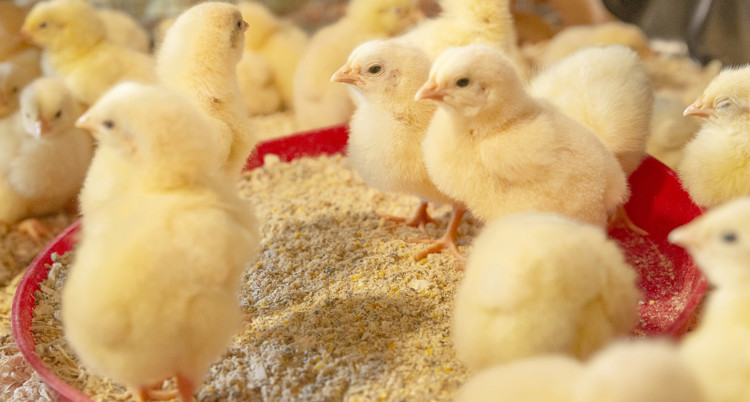Optimal feeding of broiler breeders to produce vital broilers
Excellent chick quality is of importance for the proper start-up of a flock of broilers. This already starts during the formation of the egg and the embryo in the broiler breeder. As soon as the hatching egg is laid, all of the nutrients needed for the embryo to develop until hatch, must be present. The broiler breeder itself and its nutrition play an important role in this regard. De Heus, in cooperation with Wageningen University & Research, recently initiated an extensive long-term study of the influence of the broiler breeder’s nutrition on chick quality.

Unique Study
For mammals and birds it has been demonstrated that maternal nutrition during gestation or egg production can have a major influence on the vitality and health of the offspring. However, barely any research has been conducted anywhere in the world into the nutrition of broiler breeders in relation to chick quality. The currently available literature is often outdated and no longer applicable to modern genetics or the related current management practices. Furthermore, research that is conducted generally does not focus on the vitality and performance of the offspring, as a result of which it is not possible to establish a direct link between the broiler breeder and its offspring. This study makes this possible. Another unique aspect of the study is that the different links of the supply chain, rearing, production, incubation of hatching eggs and broiler farms will be connected with each other.
Body weight and composition
It is well-known that the composition, or the nutrients, of the hatching egg are important for chick quality. These nutrients can originate from different sources. Nutrients can be deposited directly from the feed into the egg, such as fats and proteins, or they can first be converted from the feed to the broiler breeder’s body reserves and from there to the egg. Research has shown that broiler breeders use a significant portion of their body reserves to lay an egg. It is therefore important for the body reserves to be sufficiently built up and to be in proper balance, otherwise this can have adverse effects on chick quality.
The first part of the study conducted by De Heus will therefore look at the effects of the broiler breeder’s body composition (= body reserves) and body weight on the composition of the hatching egg and chick quality. Broiler breeders arrive at the research farm as day-old chicks, after which they will be reared in accordance with various weight curves. Different diets, with varying energy-to-protein ratio, will be provided within these weight curves. By varying the energy content and the energy-to-protein ratio, we are able to vary the body composition of the broiler breeders. Finally, we will measure the impact this has on the composition of the hatching egg and/or chick quality.
Measurements are the key to knowledge
In this study, numerous different measurements will be carried out at a wide range of critical times. For example, not only the body weight and composition of the broiler breeders will be measured, settable egg production, fertility, hatchability and behaviour will also be measured. The egg composition of the eggs produced by the broiler breeders will be determined. At hatch, chicks quality will be measured immediately. We do this by assessing the vitality, weight, activity and residual yolk uptake. In the last part of the chain, day-old chicks will be placed at the research facility for broilers and monitored up to their slaughter age. During this period numerous observations will be made to determine the effect of the broiler breeder’s nutrition on the offspring.
De Heus and Wageningen UR
This scientific research will cover a period of a total of four years and will be carried out in cooperation with Wageningen University. This makes it possible to combine the university’s scientific knowledge with De Heus’ practical knowledge and experience in the area of feed and management.
Application in practice
We expect to have all of the results of the first part of the study by mid-2020. These results will form the basis for the follow-up research within the project. In addition, we will be able to use the results of this part of the study to adjust the nutrition during the rearing and production periods, whereby both the broiler breeder and the offspring will be optimally fed. This way, we will be able to secure high chick quality and an effective start-up of the broilers originating from the broiler breeders of our customers. More about our feed for poulty
